
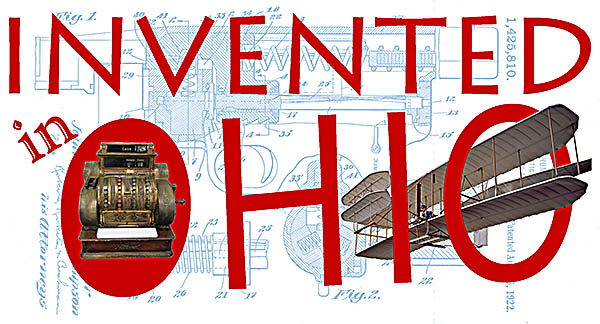
INVENTION OF THE KLONDIKE BAR
Copyright © 2022 by Mark Strecker
Modern Klondike Bar Package
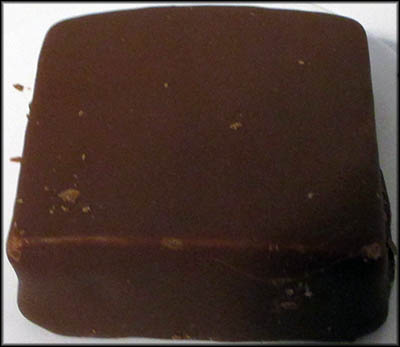
Polar Bar Package
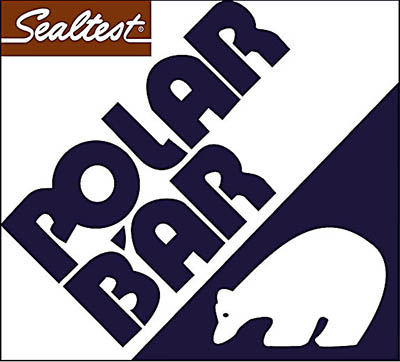
Klondike Bar Unwrapped
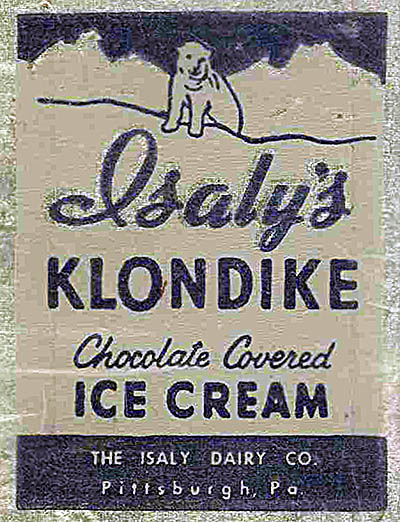
Early Klondike Bar Package
Courtesy of the Cleveland Public Library
Courtesy of the Cleveland Public Library
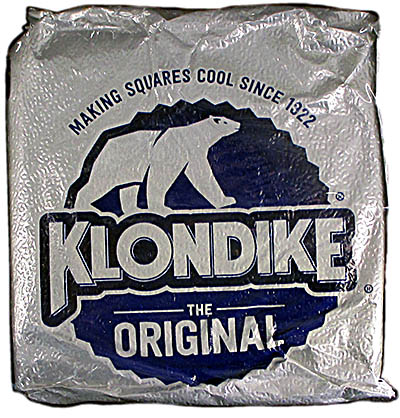
During the day Christian Nelson taught high school in Onawa, Iowa. After school he and a partner ran a candy and ice cream store called the Nelson-Mustard Cream Company. One day, so the story goes, a boy came in and couldn’t decide if he wanted a candy bar or ice cream. This gave Nelson the idea of putting a slab of ice cream coated with chocolate on a stick to offer a sort of hybrid. The trouble was Nelson couldn’t get the chocolate to stick. For the next few months he tried a variety of techniques to no avail.
A man who sold bonbons told him the trick to getting the chocolate to adhere was adding cocoa butter to it. This worked. Nelson found that he achieved the best results by heating the chocolate to between 80- and 90-degrees Fahrenheit, dipping the ice cream into it, then throwing it into a freezer. He named his new invention the Temptation I-Scream Bar and came up with this catchy (and now cliché) catchphrase: “I scream, you scream, we all scream for I-scream.”
It sold so well, Nelson decided he needed to patent his idea. In the summer of 1921 he went to Omaha, Nebraska, to meet with a patent lawyer. While there he met Russell Stover, who at the time worked as a supervisor at an ice cream plant and knew the business of making it well. Nelson and Stover founded a partnership to make and sell the I-Scream Bar. Stover disliked the name, so he sent his sister and Nelson to Omaha’s library to looked for words one associated with the cold. “Eskimo” (then and now an ethnically derogatory word) was chosen. Stover decided to tack on the word “pie” onto the name because of its familiarity. Thus the Eskimo Pie was born.
A man who sold bonbons told him the trick to getting the chocolate to adhere was adding cocoa butter to it. This worked. Nelson found that he achieved the best results by heating the chocolate to between 80- and 90-degrees Fahrenheit, dipping the ice cream into it, then throwing it into a freezer. He named his new invention the Temptation I-Scream Bar and came up with this catchy (and now cliché) catchphrase: “I scream, you scream, we all scream for I-scream.”
It sold so well, Nelson decided he needed to patent his idea. In the summer of 1921 he went to Omaha, Nebraska, to meet with a patent lawyer. While there he met Russell Stover, who at the time worked as a supervisor at an ice cream plant and knew the business of making it well. Nelson and Stover founded a partnership to make and sell the I-Scream Bar. Stover disliked the name, so he sent his sister and Nelson to Omaha’s library to looked for words one associated with the cold. “Eskimo” (then and now an ethnically derogatory word) was chosen. Stover decided to tack on the word “pie” onto the name because of its familiarity. Thus the Eskimo Pie was born.
A patent was issued in January 1922. Stover and Nelson decided to license their treat. Trouble started immediately. Royalties from licensees were either less than what was owned or not paid at all. Worse, the Eskimo Pie’s popularity resulted in many imitators—the Klondike Bar being one, though it was square and didn’t have a stick. To deter these, Nelson and Stover sued anyone they perceived as violating the Eskimo Pie patent. This perpetual litigation didn’t appeal to Stover, so he sold out and went to start what turned out to be a successful candy making operation. Nelson found investors and started the Eskimo Pie Corporation. It was bankrupt by the end of 1923 thanks to costly patent infringement litigation. Richard S. Reynolds, Sr., who owned the United States Foil Company (now Reynolds Metals), bailed it out. He was familiar with the Eskimo Pie’s popularity because his company had been producing wrappers for many of the licensees.
One of those knockoffs was the Klondike Bar. It's doubtful Nelson was even aware it existed. It was a regional treat initially sold in eastern Ohio with later expansions into western Pennsylvania and northern West Virginia. It was produced by Isaly’s Dairy Company based out of Mansfield, Ohio. This was founded by William Isaly, a man of Swiss descent who’d Anglicized his family from Iseli to Isaly. Born in Monroe County, Ohio, on January 22, 1861, he moved to Richland County in 1892 where he purchased a farm north of Mansfield. He’d come here to get into the Swiss cheese making business, but finding the area wasn’t suitable for that, decided to focus on the production and sale of milk.
In 1899 he bought Loiselle Bread and Milk, which was renamed the Mansfield Pure Milk Company. Located on North Franklin Street, by 1902 it had 26 milk delivery routes including the Mansfield State Reformatory. In 1909 the company opened a small store that sold butter, milk and ice cream cones, which had been popularized at the 1904 World’s Fair in Saint Louis, Missouri. Many claimed to have invented the ice cream cone, but no definitive candidate exists. Certainly, the cone itself already existed before the World’s Fair. The 1884 book Fancy Ices by Agnes Marshall has a recipe for one, which she called a “cornet.” Italo Marchiony, a New York City ice cream vendor who worked on Wall Street, was awarded the first U.S. patent for an ice cream cone in December 1903.
One of those knockoffs was the Klondike Bar. It's doubtful Nelson was even aware it existed. It was a regional treat initially sold in eastern Ohio with later expansions into western Pennsylvania and northern West Virginia. It was produced by Isaly’s Dairy Company based out of Mansfield, Ohio. This was founded by William Isaly, a man of Swiss descent who’d Anglicized his family from Iseli to Isaly. Born in Monroe County, Ohio, on January 22, 1861, he moved to Richland County in 1892 where he purchased a farm north of Mansfield. He’d come here to get into the Swiss cheese making business, but finding the area wasn’t suitable for that, decided to focus on the production and sale of milk.
In 1899 he bought Loiselle Bread and Milk, which was renamed the Mansfield Pure Milk Company. Located on North Franklin Street, by 1902 it had 26 milk delivery routes including the Mansfield State Reformatory. In 1909 the company opened a small store that sold butter, milk and ice cream cones, which had been popularized at the 1904 World’s Fair in Saint Louis, Missouri. Many claimed to have invented the ice cream cone, but no definitive candidate exists. Certainly, the cone itself already existed before the World’s Fair. The 1884 book Fancy Ices by Agnes Marshall has a recipe for one, which she called a “cornet.” Italo Marchiony, a New York City ice cream vendor who worked on Wall Street, was awarded the first U.S. patent for an ice cream cone in December 1903.
Isaly’s cones didn’t sell that well. At the time most ice cream cones cost a nickel and were two ounces. William Isaly decided to double the weight of his, creating what would in years to come become known as the Skyscraper cone. Four inches tall, those serving them had to practice for hours before being allowed to sell them to the public. It was an immediate success. Ice cream parlors that served scoops of Isaly’s ice cream still only gave out two ounces, so Isaly decided to open his own stores. Starting in 1918, franchises were established. The Isaly’s stores had delis, ice cream parlors, and restaurants. The first one opened in Youngstown. The stores also sold chip chop ham—another Isaly invention—and had a uniform art deco style.
Mansfield Pure Milk opened factories in Marion and Youngstown, both of which were named Isaly’s Dairy Company. The Mansfield plant didn’t change its name to that until 1920. The company introduced the Klondike Bar in 1922, which was initially made by hand by women because the equipment to automate its production didn’t yet exist. In later years the company produced them at a factory in Pittsburgh.
Credit for who came up with the Klondike Bar remains uncertain. Some say it was William, or one of his sons, either Chester or Sam. Its name was chosen to evoke cold and referenced the 1890s gold rush in the Yukon along the Klondike River. If Chester invented it, then its city of origin is Youngstown, not Mansfield, because he was running the Youngstown factory at that time. Marion Hinkley, who worked with Chester, laid claim to coming up with the name.
Mansfield Pure Milk opened factories in Marion and Youngstown, both of which were named Isaly’s Dairy Company. The Mansfield plant didn’t change its name to that until 1920. The company introduced the Klondike Bar in 1922, which was initially made by hand by women because the equipment to automate its production didn’t yet exist. In later years the company produced them at a factory in Pittsburgh.
Credit for who came up with the Klondike Bar remains uncertain. Some say it was William, or one of his sons, either Chester or Sam. Its name was chosen to evoke cold and referenced the 1890s gold rush in the Yukon along the Klondike River. If Chester invented it, then its city of origin is Youngstown, not Mansfield, because he was running the Youngstown factory at that time. Marion Hinkley, who worked with Chester, laid claim to coming up with the name.
The bar, targeted at adults, sold for 10 cents and came in a variety of flavors: cherry, grape, maple, vanilla, strawberry and chocolate. Those who found a pink center received a free one. “Klondike” wasn’t trademarked until January 1, 1928. On the trademark was issued, Isaly’s location was listed as Youngstown, indicating this may indeed be where the Klondike Bar originated. The silver, blue and white color scheme on its foil wrapper was first introduced in the 1940s. Starting in 1956, the Klondike name was preceded by “Isaly’s,” and a polar bear was added. Isaly’s was the dominate word until 1978 when it was made smaller than “Klondike.” Advertising was done mainly in newspapers, point-of-sales materials, and, later, a television commercial that included a polar bear and miner.
In 1977, Isaly’s was sold to the Greenwich, Connecticut-based Clabir Corporation for $7.3 million. The company was founded by Henry Clarke and named by taking the first three letters of his last name and the first three of his mother’s first name, Bird. Clabir bought companies but left their names in tact. Clark, according to his obituary in the Greenwich Daily Voice, “fell in love with the Klondike Bar.” As a result, he decided to expand its market, first trying it out in Philadelphia.
Television ads and a contest that offered the top prize of a trip to the Klondike or a $2,000 bar of gold, made it a success. Clabir desired to expand the market further but lacked the distribution capabilities to do that, so in 1978 it approached Kraft to see if it would be interested in doing this. Although Kraft had its own ice cream brands—Sealtest and Breyers—it was also in the business of distributing other companies’ products at the time. Kraft agreed to sell the Klondike Bar, its first test market being Florida. It did well there, so Kraft expanded to other states. In 1984 a national television advertising campaign began with the memorable slogan: “What would you do for a Klondike Bar?”
In 1977, Isaly’s was sold to the Greenwich, Connecticut-based Clabir Corporation for $7.3 million. The company was founded by Henry Clarke and named by taking the first three letters of his last name and the first three of his mother’s first name, Bird. Clabir bought companies but left their names in tact. Clark, according to his obituary in the Greenwich Daily Voice, “fell in love with the Klondike Bar.” As a result, he decided to expand its market, first trying it out in Philadelphia.
Television ads and a contest that offered the top prize of a trip to the Klondike or a $2,000 bar of gold, made it a success. Clabir desired to expand the market further but lacked the distribution capabilities to do that, so in 1978 it approached Kraft to see if it would be interested in doing this. Although Kraft had its own ice cream brands—Sealtest and Breyers—it was also in the business of distributing other companies’ products at the time. Kraft agreed to sell the Klondike Bar, its first test market being Florida. It did well there, so Kraft expanded to other states. In 1984 a national television advertising campaign began with the memorable slogan: “What would you do for a Klondike Bar?”
In October 1979, Kraft asked to purchase the rights to the Klondike Bar to sell under its Sealtest brand. Clabir declined. Late that year Kraft decided to develop a knock off that it called Polar B’ar, an old trademark used between 1929 to 1932 by Southern Dairies, Inc., a company Kraft had acquired. The Polar B’ar went on sale under the Sealtest name in 1980. Kraft helpfully sent its design team a Klondike six pack as the model for its product’s wrapper and packaging. The result was one with similar colors and a polar bear. In 1982 Kraft ended its distribution deal with Clabir, prompting the latter to sue the former in a Florida court for trademark infringement.
By this time the Isaly’s brand was in bad shape. Nearly all its stores had closed and the only thing it had of real value was the Klondike Bar. Clabir tried to sell Isaly’s but found not takers, so it got two British companies, Sheraton Securities International PLC and Steaua Romana PLC to invest. This was an odd choice because both were developers, not food companies. The former developed commercial property and the latter oil and gas. Then again, Clabir owned General Defense, which made military hardware. To emphasize the fact that Isaly’s had both American and British owners, its name changed to AmBrit.
The Polar B’ar brand, meanwhile, suffered a blow from which it never recovered. In 1986 people started getting sick from a Listeria contamination originating in Kraft’s Richmond, Virginia plant. The bacterium Listeria monocytogenes spreads in food and causes unpleasant and sometimes fatal symptoms including fever, diarrhea, muscle aches, and even meningitis. At least 145 people were sickened. Kraft denied its culpability while at the same time shutting down the Richmond factory for deep cleaning, It pulled all its Polar B’ars off store shelves.
AmBrit won its trademark suit against Kraft. Kraft appealed and lost. In the end it had to pay AmBrit $8.5 million in damages. The Polar B’ar was done. So was the Klondike Bar with the Isaly’s name. By 1989 AmBrit was losing money, so its parent Clabir brought in two new investors and installed them as directors. One of them was Barry S. Halperin, owner of the Empire of Carolina Company, maker of (among other products) Big Wheel. The financial troubles weren’t because of lagging Klondike Bar sales. Advertising pushed these so high that demand outpaced supply. The Klondike Bar was sold to Unilever in 1993. This massive worldwide conglomerate cheapened the bar’s ingredients, reducing its quality. It also removed the Isaly name from the packaging.🕜
By this time the Isaly’s brand was in bad shape. Nearly all its stores had closed and the only thing it had of real value was the Klondike Bar. Clabir tried to sell Isaly’s but found not takers, so it got two British companies, Sheraton Securities International PLC and Steaua Romana PLC to invest. This was an odd choice because both were developers, not food companies. The former developed commercial property and the latter oil and gas. Then again, Clabir owned General Defense, which made military hardware. To emphasize the fact that Isaly’s had both American and British owners, its name changed to AmBrit.
The Polar B’ar brand, meanwhile, suffered a blow from which it never recovered. In 1986 people started getting sick from a Listeria contamination originating in Kraft’s Richmond, Virginia plant. The bacterium Listeria monocytogenes spreads in food and causes unpleasant and sometimes fatal symptoms including fever, diarrhea, muscle aches, and even meningitis. At least 145 people were sickened. Kraft denied its culpability while at the same time shutting down the Richmond factory for deep cleaning, It pulled all its Polar B’ars off store shelves.
AmBrit won its trademark suit against Kraft. Kraft appealed and lost. In the end it had to pay AmBrit $8.5 million in damages. The Polar B’ar was done. So was the Klondike Bar with the Isaly’s name. By 1989 AmBrit was losing money, so its parent Clabir brought in two new investors and installed them as directors. One of them was Barry S. Halperin, owner of the Empire of Carolina Company, maker of (among other products) Big Wheel. The financial troubles weren’t because of lagging Klondike Bar sales. Advertising pushed these so high that demand outpaced supply. The Klondike Bar was sold to Unilever in 1993. This massive worldwide conglomerate cheapened the bar’s ingredients, reducing its quality. It also removed the Isaly name from the packaging.🕜
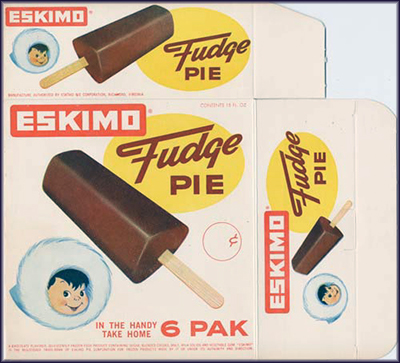
Eskimo Pie Package from the Smithsonian's National Museum of American History
Flickr
Flickr